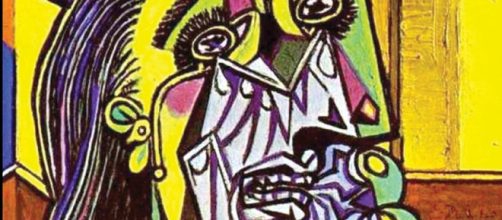Here comes another climate protest with more activists gluing themselves to an artwork, this time to the ancient statue of “Laocoon and His Sons” at the Vatican.
But in the reporting of this story, major news outlets parroted in lockstep the same quote about how the Laocoon statue is the “prototypical icon of human agony.” It isn’t.
Granted the source of that quote is the British classical scholar Nigel Spivey, senior lecturer at the University of Cambridge with a long list of books on the subject to his credit.
Even so, given that Spivey’s expertise is in the classics, his view of icons is limited.
How else to explain all the artworks expressing agony through the ages that his pronouncement overlooks.
Before I note examples, someone needs to point out that the only way people can ever know the Laocoon statue is an “icon of agony” is if they know the back story – that Laocoon was a priest in Troy, that he and his two sons were attacked by a sea serpent, that a god sent the monster as a punishment, that...never mind. It’s a long story.
The point is you need a libretto to understand why Spivey calls the sculpture an icon of agony. Otherwise, the twisting, turning action of the figures could pass for a dance movement.
As I see it, in order for an artwork to be classed an “icon of agony,” you need to feel what you see.
The image comes without words. It's a silent witness.
Symbol of suffering
Consider Picasso’s "Crying Woman." Instead of showing you what a distraught woman looks like, he shows you how it feels to be distraught – pulled apart, ripped, wrenched. The Cubist style with its hard angles and sharp edges serve that state of mind.
So, “Crying Women” doesn’t need a back story.
To appreciate it, you don’t need to know that Picasso painted it in 1937 based on the agonies of the Spanish Civil War in his painting “Guernica.”
To feel what the “Crying Woman” feels, you don’t need to know that she is that shrieking mother in the painting Guernica when the Germans’ bombed civilians in her town. She is every woman who suffers loss.
The sickroom
Fatal illness is another agony. Edvard Munch’s “Death in the Sickroom” is a killer image of his childhood, of the dying of his sister Sophie from tuberculosis. But you don’t have to know that to connect to this painting in a visceral way. Everyone knows about dying.
A quick glance at this painting can even tell you how it felt to be little Edvard in that sickroom. You see figures avoiding one another’s eyes, clearly unable to withstand what they surely would see – unrelenting grief.
By averting the eyes of each figure in the sickroom, Munch conveys their discomfort. He also gets across their mood. He’s drawn the drapes to darken the room. Death is coming.
Munch told his biographer Joseph Paul Hodin that his mother also died early leaving him with an overly nervous father – “pietistic, bordering on fanatical.”
From birth the artist said that anxiety, death, and sorrow followed him outside when he played.
And in his sleep, he said he felt death threatening him as punishment.
But again, you don’t need to know any of that to feel the agonies in “Death in the Sickroom.” Quite the reverse, the ancient sculpture “Laocoon and His Sons” depend on you knowing their story.


